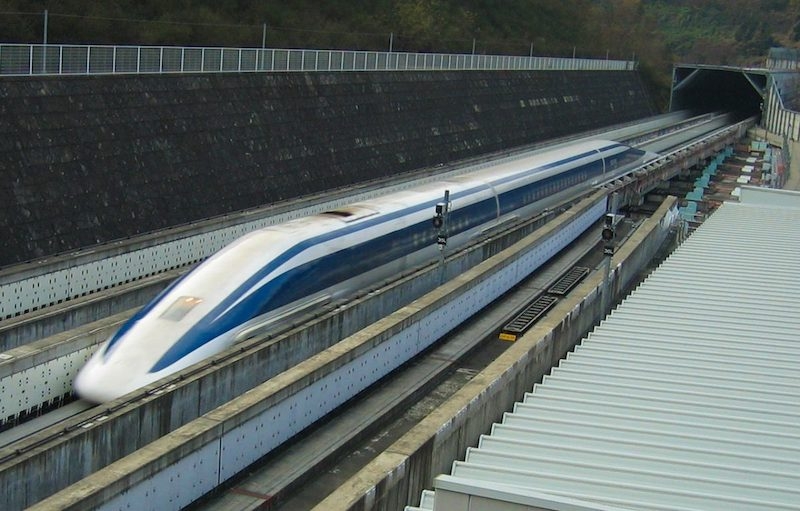Well, Japan can’t be beaten in terms of long-distance transportation. The country’s high-speed bullet train network will further cement it as one of the world’s best transportation systems ever. In the coming years, Japan will welcome Maglev bullet trains, where “maglev” means “magnetic levitation” technology. But how does that make sense?
Also read: Japan’s Newest Overnight Bus Is So Cosy, It Will Cure Your Insomnia
What you need to know about Maglev bullet trains in Japan
JR Central in Japan is currently developing the Maglev technology. This technology is an electrodynamic system that uses “superconductive magnets in the train’s body which interact with metal coils along a guideway,” according to tsunagu Japan. Due to this, the new bullet trains are propelled forward and achieve a floating height of 10cm once the trains are at speed. So, no, we weren’t just using the word “levitation” for effect. This new breed of bullet trains will physically levitate as they bring you to your next destination.
To make things better, the levitation will eliminate friction, which equates to minimal wear-and-tear and therefore lower maintenance expenses. Not to mention, the experience will be a much quieter one for commuters!

Image credit: JR Rail Pass Official Website
Now, you might be wondering what the difference in travel time will be between the old bullet trains and the new Maglev high-speed trains. According to tsunagu Japan, “The maglev Chuo Shinkansen line is expected to cut this time down to 40 minutes between Tokyo and Nagoya and 67 minutes from Tokyo to Osaka.” In other words, you can save time from an hour and a half onwards as you travel from one prefecture to another on your future Japan vacations!
Also read: China’s Maglev Train Is So Fast, It Looks Like It’s Floating
Soon, you’ll find Japan’s Maglev bullet trains at the Chuo (Central) Shinkansen line, which links Tokyo, Nagoya, and Osaka. The route from Tokyo to Nagoya is expected to be completed in 2027, while the Osaka section is still slated for completion in 2037. Urban planning and sustainable development will always be worth the wait!
Featured image credit: JR Rail Pass | Official Website




